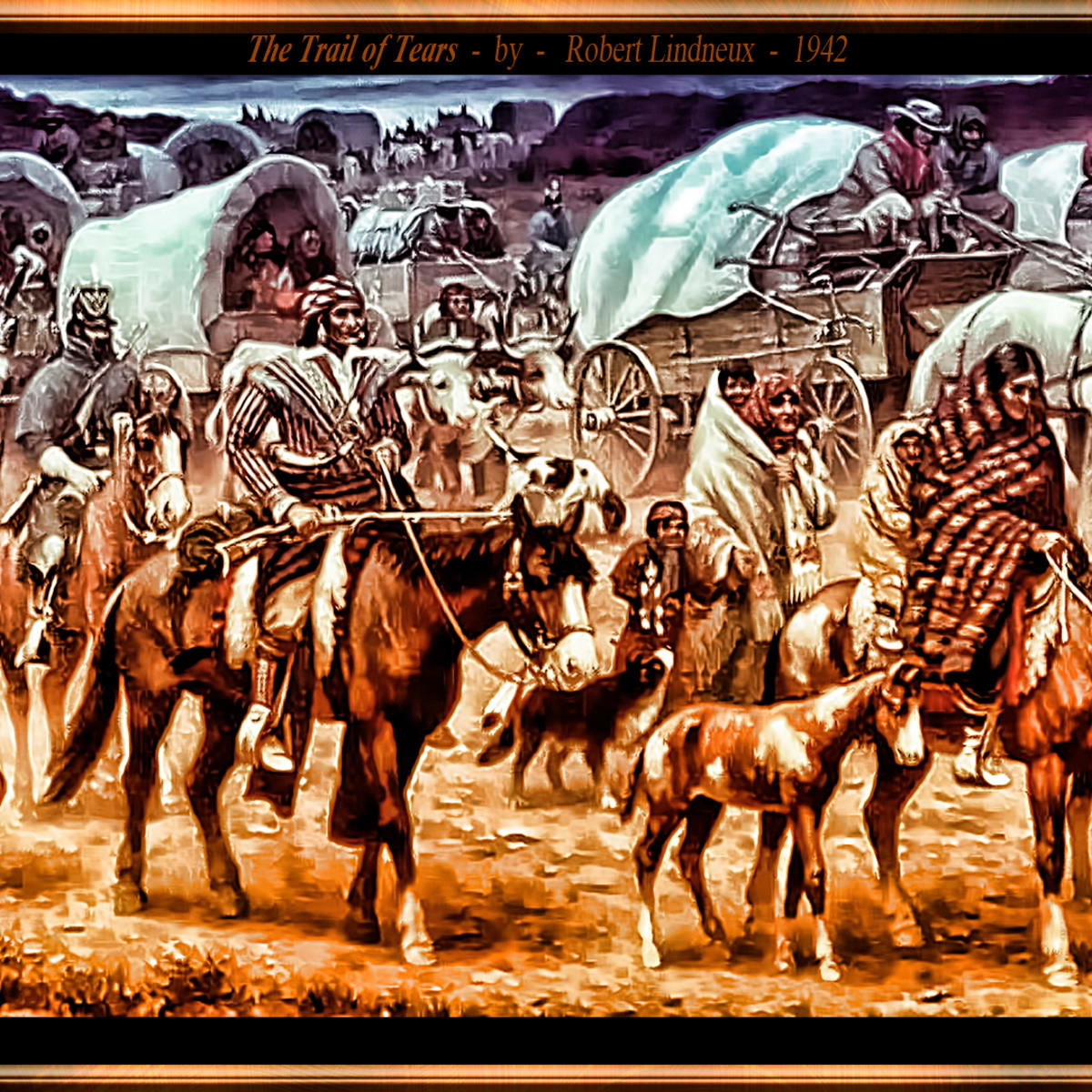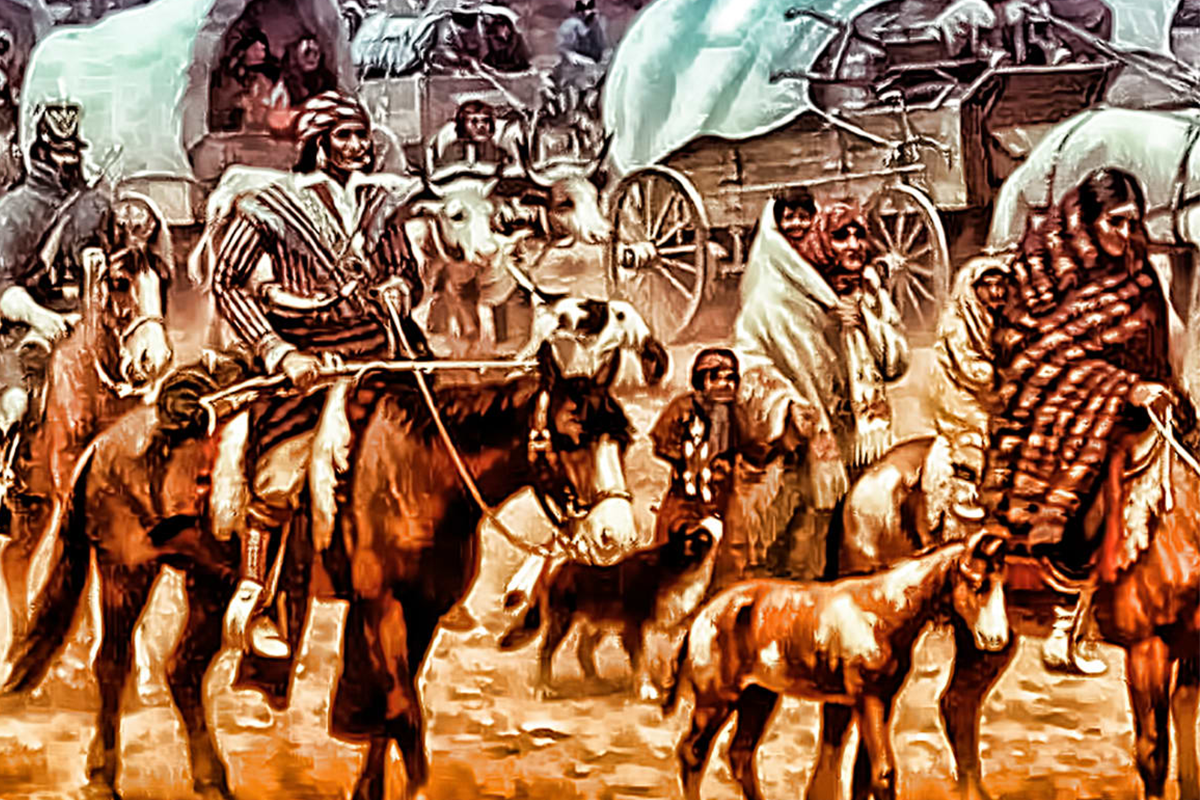
During the early 1800’s there was a surge of white settlers moving into what was the states of todays, Kentucky, Tennessee, Florida, Alabama, Mississippi, Georgia, North Carolina and South Carolina. They found themselves facing an insurmountable obstacle as this was the home of the Creek, Cherokee, Choctaw, Chickasaw and Seminole. These Indians were considered standing in the way of “progress,” so they began pressuring the federal government into ceding more and more Indian land to them.
Andrew Jackson was military commander in the area and during the years between 1814 and 1824 he divested the tribes, especially the Creeks of millions of acres of their land.
A year earlier the Supreme Court ruled the Indians could occupy the land but could not hold title. The Creek, Cherokee and Chickasaw, retaliated by refusing to sell what land they had left to the federal government.
At first the tribes went along with the treaties. They had adopted many customs of the white settlers, including large scale farming, education and even slaveholding, thus earning the designation, The Five Civilized Tribes.
The Cherokee tried legal means to keep their lands. Their earliest attempts to co-exist were non-violent and failed. They wrote their own constitution in 1827 and declared themselves a sovereign nation. The state of Georgia refused to recognize them. The Cherokee took the case to the Supreme Court and lost. They tried again in 1831 this time, in the historic case Worcester vs. Georgia, they won but President Andrew Jackson refused to enforce the law. This was when Jackson decided to ignore Chief Justice John Marshall’s ruling, famously declared, “John Marshall has made his decision; now let him enforce it.”
The federal government managed to acquire most of Alabama and Florida as well as parts of Georgia, Tennessee, Mississippi, Kentucky and North Carolina. At the time Indian migration was voluntary so very few Creeks, Cherokee and Choctaw took up the offer.
Soon after Jackson assumed the presidency in 1829, he managed to push through both houses of Congress, the Indian Removal Act. It gave the president power to negotiate land exchanges between the Indians living east of the Mississippi River for lands west of the Big River. At the time most Americans believed the lands west of the Mississippi would never be inhabited by white settlers.
The Five Civilized Tribes would have no choice but to move West voluntarily or by force. The Creeks refused to emigrate. In 1836 the Secretary of War took action and a year later 15,000 were moved to Oklahoma on the lesser-known “Creek Trail of Tears.” They never signed a removal treaty. The Seminole continued to resist, and a long and costly war lasted through a Third Seminole War that didn’t end until 1858. Finally, the federal government paid the remaining ones to move to Oklahoma. The Chickasaws agreed to a removal early, in 1832 but the onslaught of white settlers on to their land created a government SNAFU and their removal was delayed. They were finally moved to Oklahoma in the winter of 1837-1838 and were forced to pay the Choctaws to live on part of their allotment.
The Cherokee were tricked into signing an illegitimate treaty. A small faction signed an agreement to the treaty and when the majority protested but were ignored by the Supreme Court. They were given two years to move but by 1838, 16,000 still remained. The federal government stepped in and marched them at the point of bayonets into stockades. While whites looted their property, they were driven on the infamous Trail of Tears in which 4,500 died of disease, hunger and the cold on the way to their new home in the West.
Andrew Jackson’s savage treatment brutally removed 46,000 Amerinds from their traditional homelands. It was one of the most shameful periods in American history.
There would be a silver lining to this dark cloud. Oklahoma was setting atop a deposit of oil that would produce wealth far beyond a Spanish conquistadores’ dream. But that’s a story for another day.






